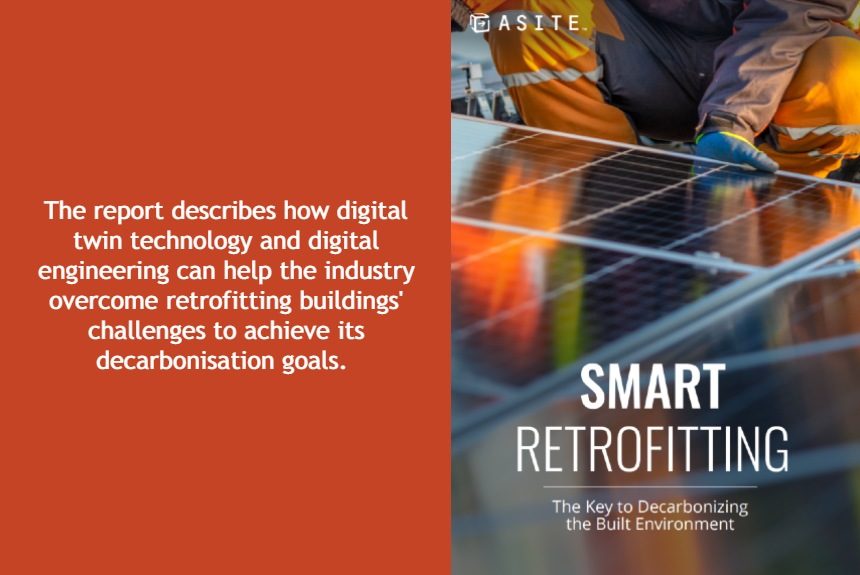How can the built environment, including existing structures, both domestic and commercial, contribute to the global decarbonisation goals and be on the path to net-zero emissions? Are there available technologies to help meet these massive challenges?
The report from Asite describes the path that the construction industry can take to achieve the above goals. It focuses on the industry’s role in contributing to GHG emissions and how, through retrofitting using digital engineering, the sector can decarbonise or reduce carbon emissions.
According to the report, existing structures, both residential and commercial, contribute to global GHG emissions. By 2050, 80% of buildings will still be in use; however, 75% of them will be energy-efficient.
Older buildings require a lot more power for space and water heating and thus emit more GHGs. Therefore, to be on the net-zero path that the Paris Agreement requires, buildings’ energy efficiency needs to be addressed by lowering their exceedingly high demands for power and increased GHG emissions.
For example, in the United States, businesses spend US$800 billion annually on their electric bills, and almost half of it accounts for heating and cooling costs.
The industry, which includes architecture, engineering and construction, property management, asset management, technology, software, and manufacturing, must work together to achieve net zero and mitigate GHG emissions.
Using digital twin technology will help the industry achieve its decarbonisation goals by retrofitting existing buildings and future builds.
What is digital twins technology?
“The consolidation of the physical and digital world and move to turn our everyday data into value is most prevalent in digital twins – the digital representation of an asset, process, or system. A holistic real-time monitoring tool for tracking an asset, offering the most comprehensive resource for retrofitting at scale. An amalgamation of multiple technologies, integrating data from several sources, providing an understanding of real-world conditions, such as energy flows, environmental conditions, and material attributes.”
The report describes how digital twin technology and digital engineering can help the industry overcome the challenges of retrofitting buildings and achieve its decarbonisation goals.
The report also discussed integrating circular economy, smart grid, and smart building technology to reduce waste, optimise material recycling, and help monitor and automate building activities to attain energy efficiency.
To read the entire report, click the link below:
Source:
Smart Retrofitting, The Key to Decarbonizing the Built Environment. (2020 December 1). Asite. Retrieved from https://www.asite.com/insights/smart-retrofitting-the-key-to-decarbonizing-the-built-environment



Leave a Reply